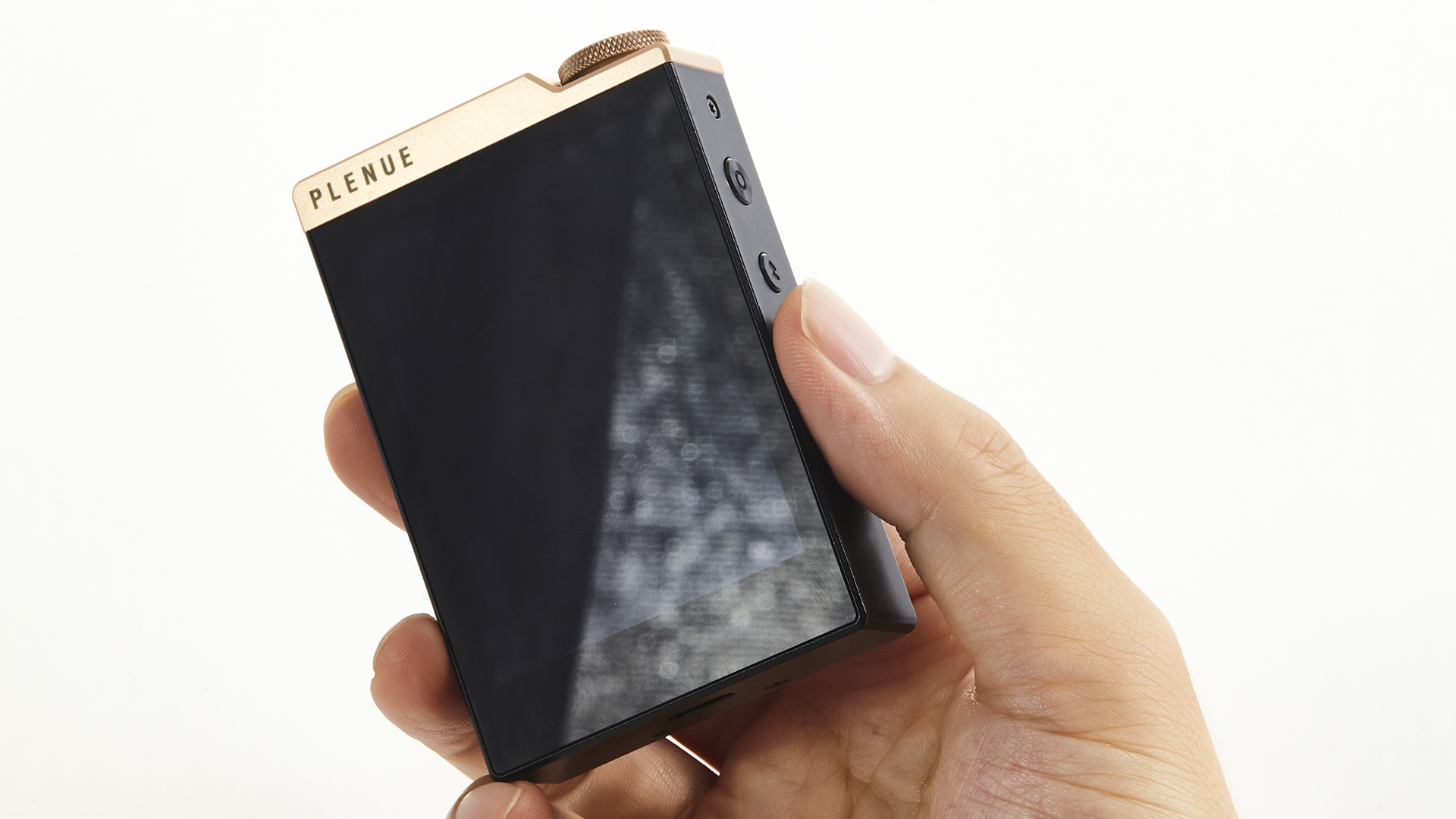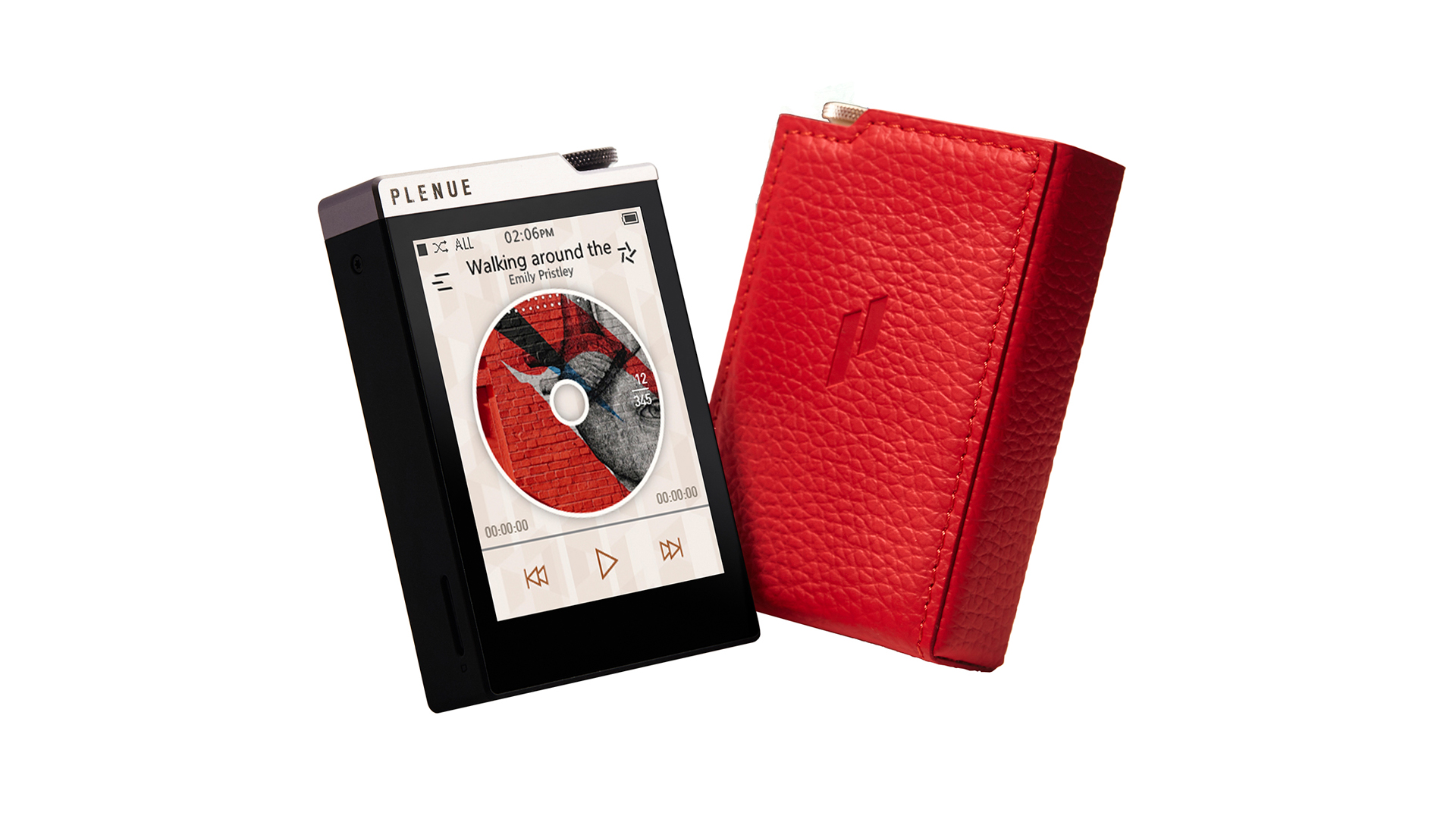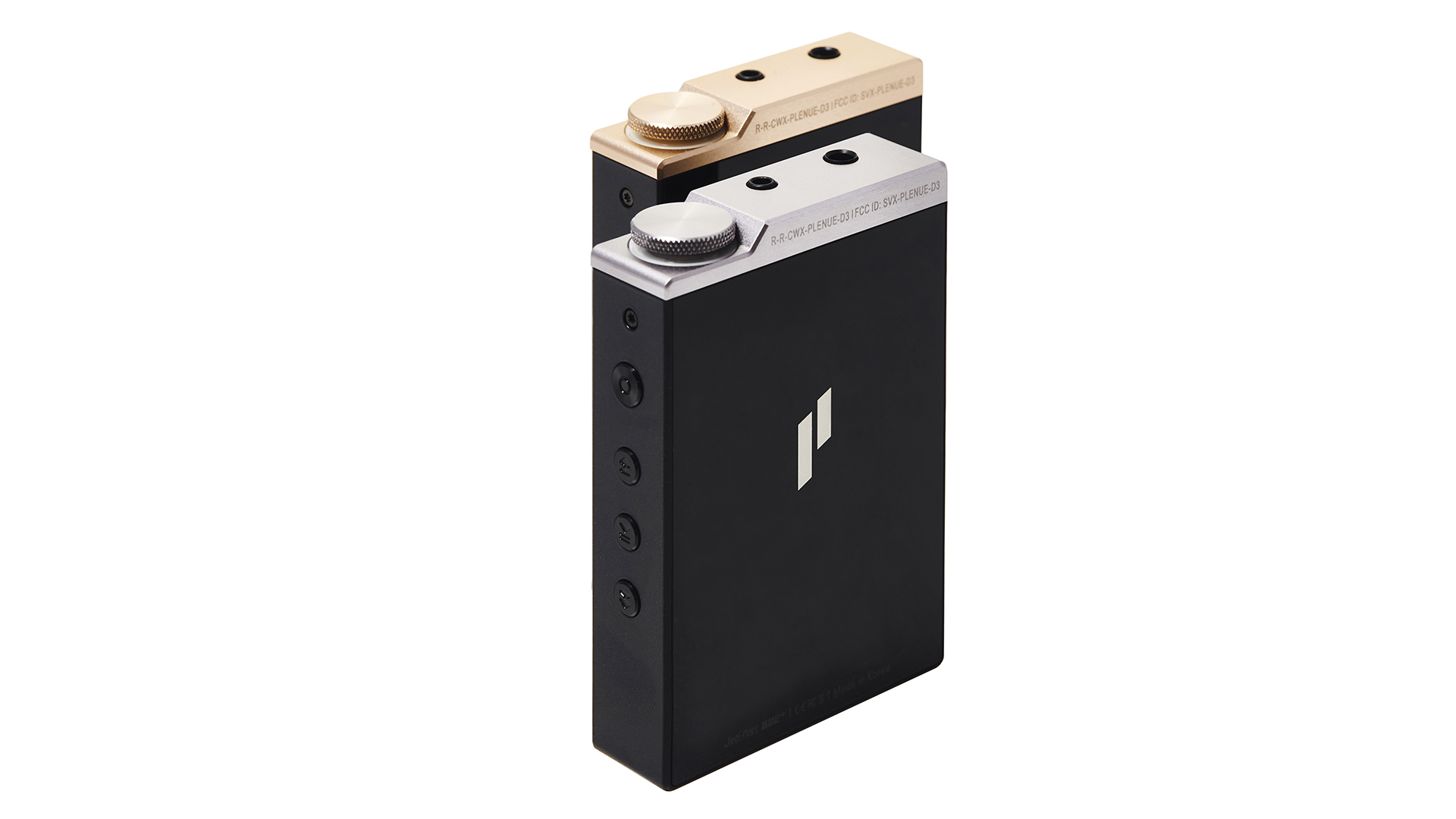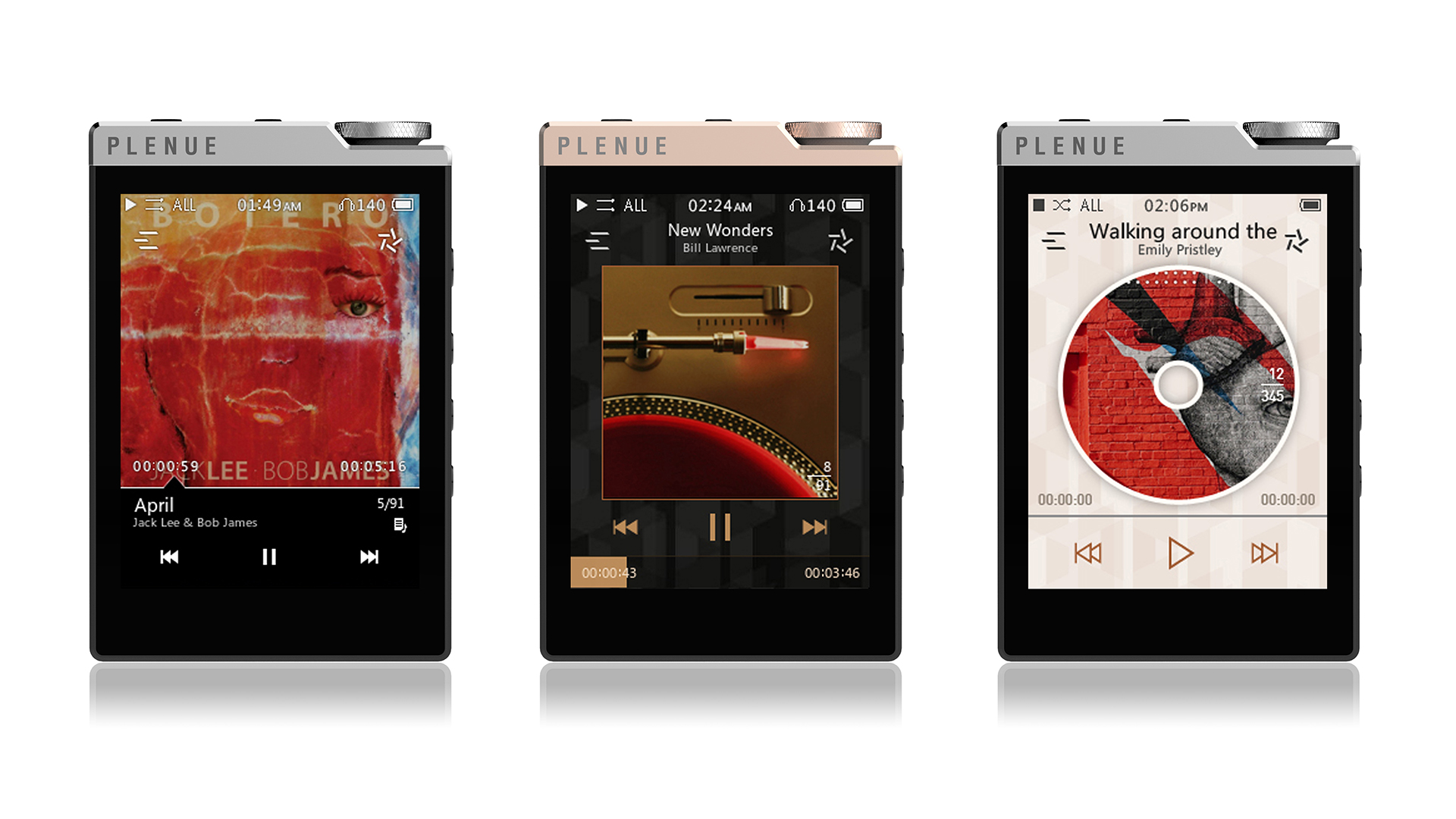What Hi-Fi? Verdict
Cowon has added Bluetooth, a volume wheel and a dual DAC to its bijou player – and produced another Award-winning class leader
Pros
- +
Detailed presentation across frequencies
- +
Bluetooth connectivity
- +
Classy build and finish
Cons
- -
Screen looks a little dated
Why you can trust What Hi-Fi?
Remember matchbook quotes, those little sayings written on complimentary matchbooks you could pick up in high-end bars or hotel lobbies? Should the Cowon Plenue D3, a matchbox-sized portable music player, have come adorned with its own saying, it might have read, 'Be cautious of people whose actions don’t match their words'.
The third-generation Plenue D player arrives with no boastful fanfare, despite both its previous iterations gaining five-star reviews and even What Hi-Fi? Awards. The demure black packaging divulges little about this machine, apart from the fact that there’s now a Cirrus Logic CS43131 dual DAC on board, whereas the last generation used just one.
There’s also Bluetooth support, so you can pair your wireless headphones or speaker, and a new rotary volume wheel. Regardless of its decorated lineage and all these useful extras, the D3 is only slightly pricier than its predecessor, the Plenue D2.
Build

As we’ve come to expect from this line of miniature portable music players, the PD3’s build is minimalist and chic, with a black mirror finish on the front and back, a matte finish for the sides, and a silver metallic panel across the top of the player. It’s also available in a gold finish.
Cowon’s isometric edge design – where two faces meet, each edge has been cut with precise calculation – creates clean lines and proves that beauty really is in the detail.

Audio file formats DSD, FLAC, WAV, AIFF, ALAC, MP3, WMA
DSD DSD64, DSD128
Bluetooth version 3.0 aptX
Battery life 45 hours
Dimensions (hwd) 8 x 5.3 x 1.6cm
Weight 103g
The Plenue D3 is a few millimetres longer and thicker than the original Plenue D, but unless you place the two side by side it is almost impossible to tell. The extra depth is down to a cracking new volume dial on the top right of the player, where the power button used to sit.
This glorious rotary wheel seems like an homage to Astell & Kern and feels just as premium as its pricier competition. As with the A&K Kann Alpha, a recessed light also shines out from beneath the dial. Here, it periodically flashes blue when playing, or glows red when charging or loading music, but you can turn it off in the settings menu if you prefer.
The latest hi-fi, home cinema and tech news, reviews, buying advice and deals, direct to your inbox.
The power button has relocated to the top right side of the player and, because there’s no need for volume buttons here anymore, the three other little circular controls for play/pause, skip forward and skip back are now even easier to locate and use in your pocket. And the player still weighs just 103g.
The touchscreen is the same 2.8in wide-angle LCD (240 x 230) display as on the previous model. If you think one interface looks a little dated, you can choose between three different ‘skins’ and also alter the text font.
The PD3 responds well, displays album artwork and offers easy navigation and grouping of your music. Considering the challenging amount of screen real estate it has to work with, that’s no mean feat. Once you get used to hopping through the settings and back to your music, the Plenue D3 is a joy to use.
Features

The PD3 boasts a battery life of up to 45 hours if you’re playing MP3 files, or a solid 30 hours when listening to hi-res files at 'normal' volume. There is support for 24-bit/192kHz WAV, FLAC, ALAC and AIFF files and 64GB of built-in storage, which is expandable to 192GB with the addition of a 128GB microSD card. The PD3 boasts DSD128 file compatibility too – and that support is native, so DSD files aren’t converted to PCM during playback. Again, there’s balanced 2.5mm and unbalanced 3.5mm headphone jacks.
So why should you upgrade to the PD3? If the new volume wheel doesn’t tempt you, Bluetooth 3.0 (with support for SBC and aptX codecs) might. We go into the PD3’s Settings menu, hit the Bluetooth tab and select our Earfun Air Pro wireless headphones, and later our Tribit Audio Stormbox Micro Bluetooth speaker, to pair. Both connect – and automatically re-pair – with ease.
If you’re going away for the weekend and want a tiny sound system for your room that is both ultra-portable and leaves your phone free for actual calls, this is a top solution. Go to the JetEffects tab in Settings and you can stream your music with effects such as ‘X-Bass’, or ever-more creative profiles such as ‘Feel the wind’ or ‘Reverb cathedral’, according to your room or tastes.
There are 48 of these JetEffects in total, including 44 named presets, four user presets you can create with a five-band equaliser and nine special ‘reverb’ modes. Want to hear a track up to 50 per cent slower or at 1.5 times its original speed? The PD3 can oblige here too. Although DSD files can’t be played over Bluetooth or with JetEffect sound profiles, most of your music will work with all of these functions.
The PD3 charges via USB-C and takes around 3.5 hours to fully charge. Loading tracks via the same port is a breeze. We hook it up to our MacBook Pro, find it under our ‘devices’ tab and drag and drop files into the ‘music’ folder – no third-party apps required. You still need to physically connect the PD3 to your source to add music, but when adding files is this easy it genuinely feels like the best way to do things.
Sound

We enjoy toying with the PD3’s Bluetooth connectivity and JetEffect features, but the bulk of our testing is done with the wired Grado SR325e headphones (with a 6.3mm to 3.5mm adaptor) and with sound profiles set to ‘Normal’. But in the Audio Output tab here, you can select between in-ear ‘earphones’ or harder-to-drive ‘headphones’, just to optimise the performance.
We cue up Queen’s Greatest Hits (16-bit/44.1kHz FLAC) and there’s a glorious amount of separation on offer from the outset of Fat Bottomed Girls as the band sings the anthemic chorus. Freddie Mercury’s vocal is central, but the instruments shine too – a detailed drum fill towards the raucous end of the track, vocal trills, guitar ideas – proving there’s an extra level of detail on offer here that some players can’t access. The album continues to Bicycle Race and the character of the vocals and the playful bass completes an exciting, zealous and transparent listen.
The bicycle bells towards the end of the track are sparkling, separate and distinguished through the treble. This is a talented player that's sonically similar in character to its older siblings, but there are small upgrades to be had in terms of rhythm, timing, detail and musicality.
From the start of Michael Jackson’s Wanna Be Startin’ Somethin’ (24-bit/192kHz FLAC) the bass riff is notably deep and agile in our left ear and the central melody is zealous and remarkably energetic for such a tiny box of tricks. The layers of vocals are handled with precision so that each is impactful across the frequencies.
Switching to Hans Zimmer’s Gotham’s Reckoning (24-bit/192kHz FLAC) from The Dark Knight Rises original soundtrack, the pensive and fast-paced percussion builds to a full-bodied snap of thunder within a brooding and expansive mix, brimming with emotion and forceful low-end punch.
Verdict
When considering the Cowon Plenue D3, it’s important to note that wi-fi streaming is still off the menu – so you will have to go without on-the-go streaming of Tidal, Deezer and others.
But if you have the files and like the idea of pairing your portable music player either to a wireless speaker or pair of headphones for one of the smallest wireless systems you’ve seen, there’s no better shout currently on the market for the money.
The Plenue D3 keeps things simple: it plays your hi-res music – and it does that very well indeed.
SCORES
- Sound 5
- Features 5
- Build 5
MORE:
Read our guide to the best portable music players
Read our Astell & Kern Kann Alpha review
Read our Cowon Plenue D2 review
What Hi-Fi?, founded in 1976, is the world's leading independent guide to buying and owning hi-fi and home entertainment products. Our comprehensive tests help you buy the very best for your money, with our advice sections giving you step-by-step information on how to get even more from your music and movies. Everything is tested by our dedicated team of in-house reviewers in our custom-built test rooms in London, Reading and Bath. Our coveted five-star rating and Awards are recognised all over the world as the ultimate seal of approval, so you can buy with absolute confidence.

